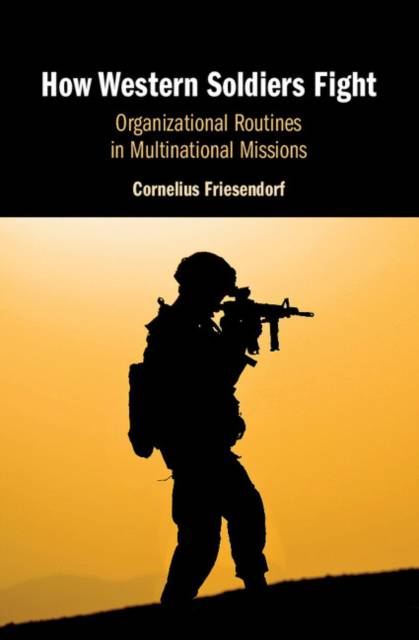
- Afhalen na 1 uur in een winkel met voorraad
- Gratis thuislevering in België vanaf € 30
- Ruim aanbod met 7 miljoen producten
- Afhalen na 1 uur in een winkel met voorraad
- Gratis thuislevering in België vanaf € 30
- Ruim aanbod met 7 miljoen producten
Zoeken
How Western Soldiers Fight
Organizational Routines in Multinational Missions
Cornelius Friesendorf
Hardcover | Engels
€ 125,95
+ 251 punten
Omschrijving
In contemporary missions, soldiers often face unconventional opponents rather than enemy armies. How do Western soldiers deal with war criminals, rioters, or insurgents? What explains differences in behavior across military organizations in multinational missions? How does military conduct impact local populations? Comparing troops from the United States, Britain, Germany, and Italy at three sites of intervention (Bosnia, Kosovo, and Afghanistan), this book shows that militaries in the field apply idiosyncratic organizational routines. Friesendorf uses the concept of routines to explain, for example, why US soldiers are trigger-happy, why British soldiers patrol on foot, and why German soldiers avoid risk. Despite convergence in military structures and practices, militaries continue to fight differently, often with much autonomy. This bottom-up perspective focuses on different routines at the level of operations and tactics, thus contributing to a better understanding of the implementation of military missions, and highlighting failures of Western militaries to protect civilians.
Specificaties
Betrokkenen
- Auteur(s):
- Uitgeverij:
Inhoud
- Aantal bladzijden:
- 320
- Taal:
- Engels
Eigenschappen
- Productcode (EAN):
- 9781108429108
- Verschijningsdatum:
- 21/06/2018
- Uitvoering:
- Hardcover
- Formaat:
- Genaaid
- Afmetingen:
- 162 mm x 234 mm
- Gewicht:
- 585 g

Alleen bij Standaard Boekhandel
+ 251 punten op je klantenkaart van Standaard Boekhandel
Beoordelingen
We publiceren alleen reviews die voldoen aan de voorwaarden voor reviews. Bekijk onze voorwaarden voor reviews.











